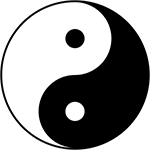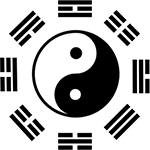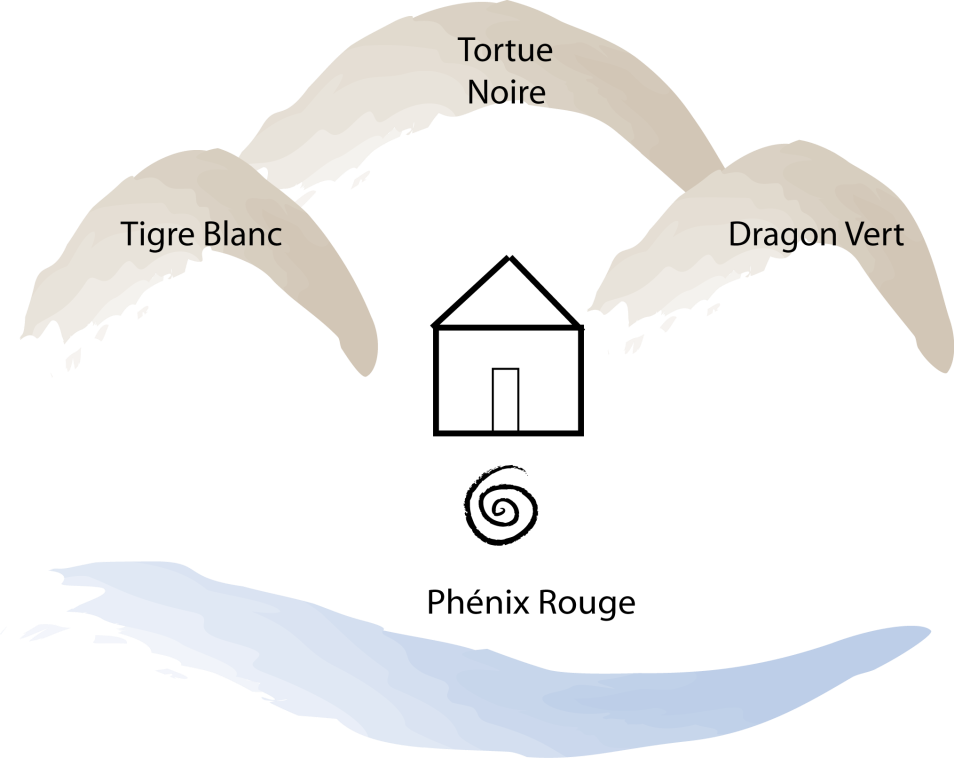The essentials

Yin – Yang
The very bases of Feng Shui rest on the principle of the Yin and Yang and are essential to the understanding of this science.
Yin and Yang are two energies: one passive, the other active. It is the concept of duality. All Yin contains Yang and vice versa. They are two cosmic forces that give balance to life and model it. They are opposites in a continual state of ebb and flow. Opposite forces that complement each other. High and low, day and night, love and hate, nothing exists in an absolute form, nothing is self sufficient.
The representation of the Yin and Yang let us surmise that we are part of a cycle, that nothing is permanent: through all, we must attain an equilibrium. IT IS THE GOAL OF FENG SHUI, to reach balance and harmony, the coexistence of Yin and Yang.
The Qi (energy) is the product of a blend of Yin and Yang in our environment: water and the mountains. Yin is represented by the mountain, because Yin is passivity, stillness and Yang is water, all that moves and is active.
If we look at it in every day life, the rooms where activity is prevalent are Yang, for example the main front door. The rooms where you relax, are Yin, for example the bedroom.
If we apply this to the human being, one who is intellectual or more spiritual is more Yin and inversly, the practical one, the athletic , one who is down to earth is Yang. None of us is all one or the other, we are a mixture of both.
Ba Gua – 8 trigrams
Trigrams are intimately linked to Yin and Yang:
To compose a trigram, you need three lines, the cosmic Trinity, Heaven, Man and Earth.
A broken line is Yin and a full one is Yang.
The trigrams start from the absolutely pure Yin, 3 broken lines superposed to absolutely pure Yang, 3 full lines superimposed passing through combinaisons of Yin and Yang.
There exists 8 base trigrams that form 64 combinaisons or hexagrams. They are the base of the Yi Jing or the Book of Transformations.
The 8 trigrams or guas are associated to a cardinal direction, an element, parts of the body, sicknesses, an animal, a colour, a character… Depending of our year of birth, our month of birth, we have a particular gua. This gua represents the relation between the person and his living space and environment. It is very important in the Ba Zhai system of analysis (when we subdivide the house or appartment into “palaces”).

Method for calculating the Ming Gua or life trigram
The solar Chinese New Year starts the 4 th of February. Anyone born before this date, belongs to the year before and must do calculations accordingly.

The Guas are grouped in 2 categories, the East and the West. Each of these groups have directions that are favourable and unfavourable.
East Guas: (1 – 3 – 4 – 9) Favorable directions: North – South- East- South-East
West Guas: (2 – 6 – 7 – 8) Favorable directions: West- North-West – North-East- South-West
The goal of Feng Shui is to find an equilibrium Yin-Yang. The human being reacts to the environment depending on which Gua he is. We also look for a balance of the Elements.

The 5 elements
5 elements are also derived from the Yin and Yang. These elements correspond to the cycle of the 5 transformations. The elements interact together. They represent 5 types of energy and they are linked to 3 cycles of the Qi.
These 5 elements are Fire – Earth – Metal – Water – Wood and they interact in 3 cycles:
The productive cycle, the weakening cycle and the controling cycle.
A) The Production cycle
Fire produces Earth which in turn produces Metal that transforms into liquid, Water which in turn nourishes Wood that feeds Fire.
B) The Weakening Cycle
This cycle is not aggressive but it reduces in a natural way, the strength of an element if we need to do so.
Fire can be attenuated by Earth and it is itself weakened by Metal (to remove metal from earth, you have to break it). In turn, Metal is weakened when it is liquified and Water is exhausted by nourishing Wood which is weakened by feeding Fire.
C) The Control Cycle
This cycle is really aggressive and should not be used needlessly.
Fire melts Metal which in turn cuts Wood which, with its roots takes vital elements from Earth that stops Water that extinguishes Fire.
4 Celestial Animals
We refer here to the school of form, San He. The starting point is the front door, the mouth of the Qi.
One of the goasl of Feng Shui is to find the perfect location to sit a house. The site is the first thing that we analyse in a reading. We have to remember that 70% of the results depend on the outside configuration, the manner in which house sits in the environment.
We always look for the security provided by the 4 celestial animals. They are a landscape formation made of mountains or buildings in the city. This configuration protects the house from the aggression of the wind.
Stand behind the main entrance door and note what surrounds you outside:
- The Turtle (mountains or houses or buildings): should ideally be situated behing the house, to protect the back of the house, to bring in the house, stability, health and family harmony. It would look like the back of a chair, strenghtening it’s back.
- The dragon (left of the house), it represents the paternal authority, financial prosperity and the career. Always standing with your back to the front door, you would have a mountain or house or building- like the left arm of the chair.
- The Tiger (right of the house), is the representation of the women, notoriety, communication. The right arm of the chair.
- The Phenix (in front of the house) is the blend of Yin and Yang. It should be in the form of a small mound, nothing to do with the size of the turtle in the back, it should not block the view. It is an area that should welcome the Qi. It represents the opportunities for future development.
The base of all good Feng Shui resides in these principles.

